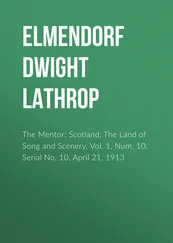Thorfinn Sigurðarson, nicknamed ‘the Mighty’, is one of the most compelling figures in the great portrait-gallery of Norse earls presented in Orkneyinga Saga. A huge, powerfully-built, swarthy man, ugly and sharp-featured, beetle-browed and with a prominent nose, he was ambitious, ruthless and very shrewd, a born survivor in an age when survival was always precarious. According to Orkneyinga Saga Thorfinn was one of the sons of Earl Sigurð Hlöðvisson of Orkney, and (like Duncan I) a grandson of a King Malcolm of Scotland (Malcolm II?). He was created Earl of Caithness and Sutherland by King Malcolm at the age of five in 1014; thereafter he fought his way to control of Orkney (by the 1030s), and by the time he died, at some date between 1057 and 1065, he had extended his realm deep into the heartlands of Scotland and over the Western Isles as well, and was recognised as the most powerful ruler in northern Britain. He was a man of compelling personal authority; after the turbulent years of his early piratical reign, he spent the latter part of his life ruling his realms wisely and benevolently from the palace and church he built on the Brough of Birsay, at the northern end of the Mainland of Orkney. His reign was the high point of the golden age of viking power in the north.
This was the man who represented the greatest threat to Macbeth’s authority in the north of Scotland. According to Orkneyinga Saga , Macbeth and Thorfinn had several encounters, all of which ended in Thorfinn’s favour. But it would say that, wouldn’t it?
Macbeth may not have been the most compelling King of Scots in the eleventh century, but he seems to have been a very capable one. He was generous to the Church, which ensured him a good early press (he and Gruoch granted lands in Fife to the Culdees of Loch Leven 1 ). Certainly, he felt secure enough to leave Scotland in 1050 and go on a pilgrimage to Rome where, according to the Chronicon of Marianus Scottus (1028–83), written in 1073, ‘he scattered his money like seed among the poor’.
In the 1050s, however, Macbeth’s reign became clouded. Duncan’s elder son, Malcolm – the future Malcolm Canmore – was cultivating support in England to reclaim the throne of Scotland. Edward the Confessor seems to have backed his ambitions. In 1054 he sanctioned an invasion of Scotland by Earl Siward, the doughty Danish-born Earl of Northumbria. Siward (probably with Malcolm at his side) invaded Scotland with a mixed army of Anglo-Saxon Northumbrians and Scots. Macbeth seems to have conducted a defensive guerrilla campaign at first; the contemporary English chronicle Vita Edwardi Regis claims that the Scots were ‘an uncertain race of men and fickle, and one which trusts rather in woods than on the plain, and more in flight than in manly courage in battle’. Siward reached Dundee apparently unopposed, where his army was reinforced by supply ships. Shortly afterwards he brought Macbeth to pitched battle on the Festival of the Seven Sleepers (27 July).
Where was this battle? Was this Shakespeare’s final ‘Battle of Dunsinane’? It could well have been – there is no documentary evidence either way. But if it was at Dunsinane, it would have been decided on the level ground below Dunsinane Hill, not in the ancient hill-fort on the summit.
Wherever it took place, it was a long and bloody encounter. There were heavy casualties on both sides. The Anglo-Saxon Chronicle for 1054 noted:
In this year Earl Siward invaded Scotland with a great host both by land and sea, and fought against the Scots. He put to flight their king, Macbeth, and slew the noblest in the land, carrying off much plunder such as none had previously gained; but his son Osbern and his sister’s son and numbers of his housecarles, as well as of the king [Edward the Confessor], were slain there.
‘He put to flight their king, Macbeth’. The one historical fact we can be absolutely sure of, pace Shakespeare and Walter Scott, is that Macbeth was not killed at Dunsinane in 1054.
For the next three years the records are silent. Siward’s victory had not been enough to give Malcolm the throne; Siward had to return to Northumbria to deal with an uprising there, and died soon afterwards. Malcolm seems to have been installed by Edward the Confessor as ruler over Strathclyde and the Lothians, but no more. Macbeth retreated northward, back to his original power-base in Moray. By 1057, however, his support seems to have been draining away, and Malcolm felt strong enough to seek out his enemy on his home ground.
The chronicles say that the fugitive Macbeth was eventually hunted down by Malcolm near the village of Lumphanan, in Aberdeenshire, and killed there in a desperate final stand rather than a pitched battle. His head was then brought to Malcolm, either on a pole or a golden platter.
There is nothing like local tradition to keep historical memory alive, however embroidered it might have become. At Lumphanan, which lies on the A980 between Banchory and Alford, the epicentre of the tradition is the nearby Peel Ring of Lumphanan, which is signposted. The Peel was once a medieval Anglo-Norman fortified motte-and-bailey; 1 now all that remains of it is a large grassy mound surrounded by a swampy moat, with an encircling earthwork. A convenient path offers easy access to the crown of the mound. In the fifteenth century, a local worthy had built himself a stone residence there – Ha’ton House – which was abandoned in the eighteenth century. The Peel has long been linked with Macbeth’s last stand; unfortunately, it dates from the early thirteenth century – nearly two hundred years after Macbeth’s death.
Other features in the district are traditionally associated with the demise of Macbeth, but it takes a very determined pilgrim to track them down. On Perk Hill on the farmlands north of the village, clearly visible from the road, there lies a ruined Bronze Age cairn girdled by a guard of honour of beech trees. It is known locally as ‘Macbeth’s Cairn’. The farmer is quite happy to permit access, although he cannot fathom why anyone should want to trek across his fields to visit it. The site was roughly excavated in 1855 and was found to contain the bones of someone who had died three thousand years earlier. It has nothing at all to do with Macbeth; indeed, the early chroniclers say that Macbeth was buried, like so many Kings of Scots before him, on the holy island of Iona.
There is also an even less accessible ‘Macbeth’s Stone’, unmarked, where the king’s head is alleged to have been severed from his body. It is the largest of a group of boulders on top of a grassy slope on Cairnbeathie Farm, on the west side of the disused railway embankment.
And there is (of course!) an unmarked ‘Macbeth’s Well’, at Burnside, near the parish church to the north-east. It is practically invisible – a small and very low stone lintel set into the base of a steep and overgrown bank at the roadside. There is no hope of finding it without a friendly and particularly knowledgeable local guide – the casual visitor would drive or even walk right past it without spotting it. An incongruous plastic hose-pipe now drips into the well. This is where the doomed monarch is said to have quenched his thirst before the final encounter.
Wherever Macbeth died, and wherever his body ended up, his death did not automatically give Malcolm the throne. Macbeth’s remaining supporters in the north proclaimed as King of Scots his stepson, Lulach (the son of Gruoch from a previous marriage). Lulach appears in history under the unflattering nickname of ‘Lulach the Simpleton’. Simpleton or not, he too was hunted down by Malcolm, and killed in March 1058 in an ambush at Essie (now Rhynie) in Strathbogie, the strategic pass between Moray and Strathdon. Lulach, too, was buried on Iona.
Читать дальше












